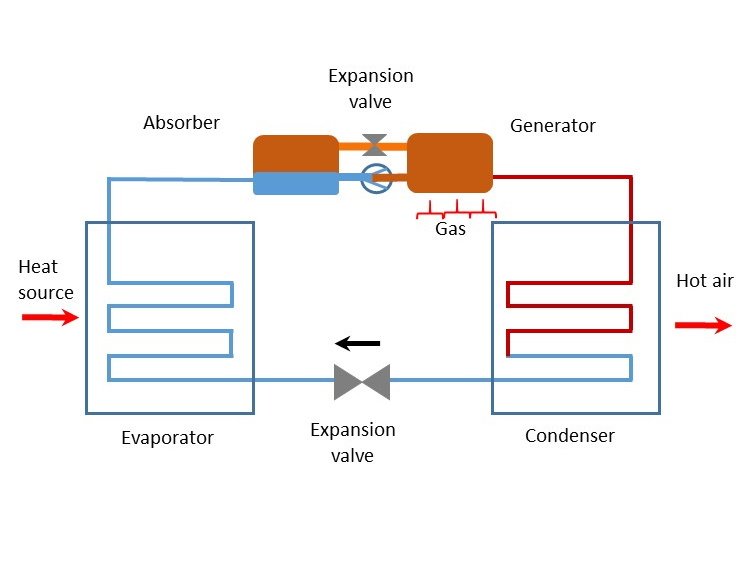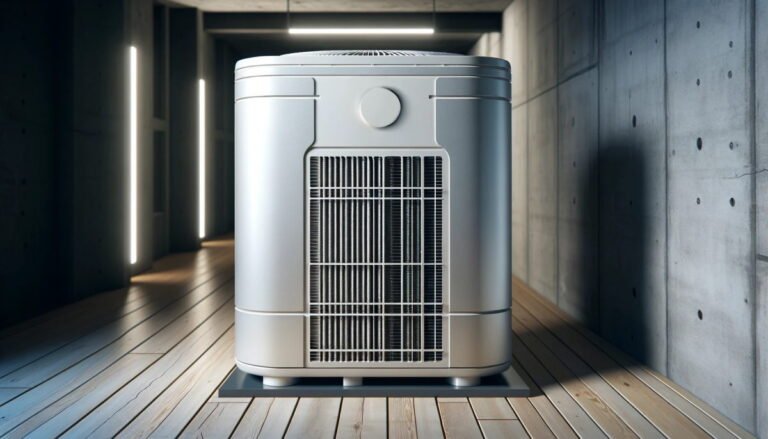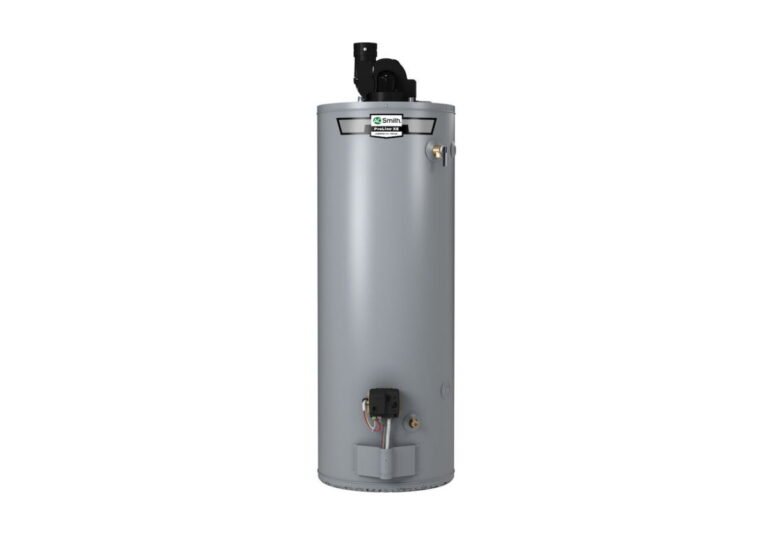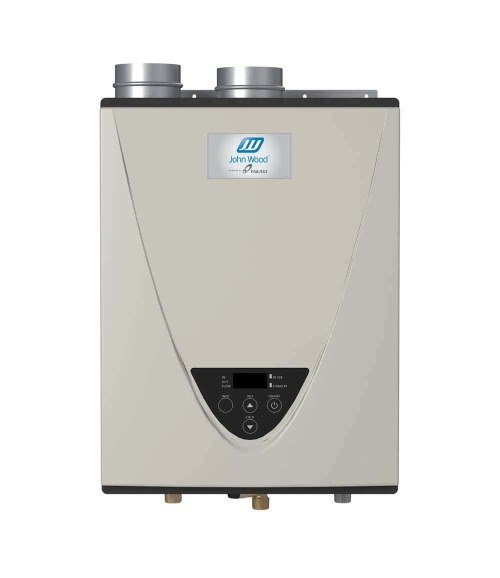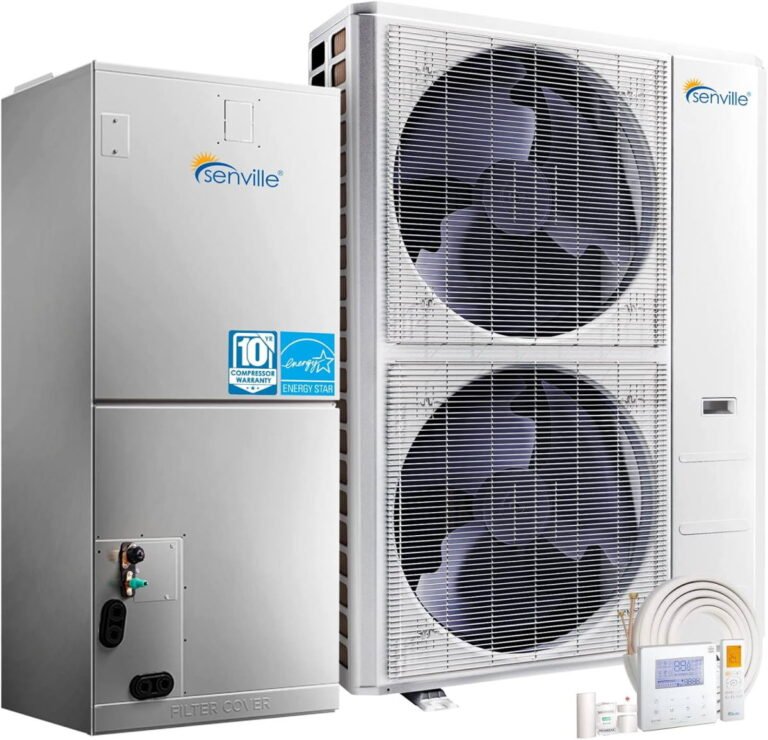What Is a Furnace? Understanding Popular Heating Systems
Furnaces play an important role in keeping our homes warm and comfortable, especially during the cold winter months. They are designed to heat air and distribute it throughout a space to maintain a steady, warm environment.
In this article, we will explore the question, “What is a furnace?” as we dive into the basics of how furnaces operate, examine different types, and describe their functions in a straightforward manner.
Understanding these essential HVAC systems will empower you to make informed decisions about efficiently and effectively heating your home.
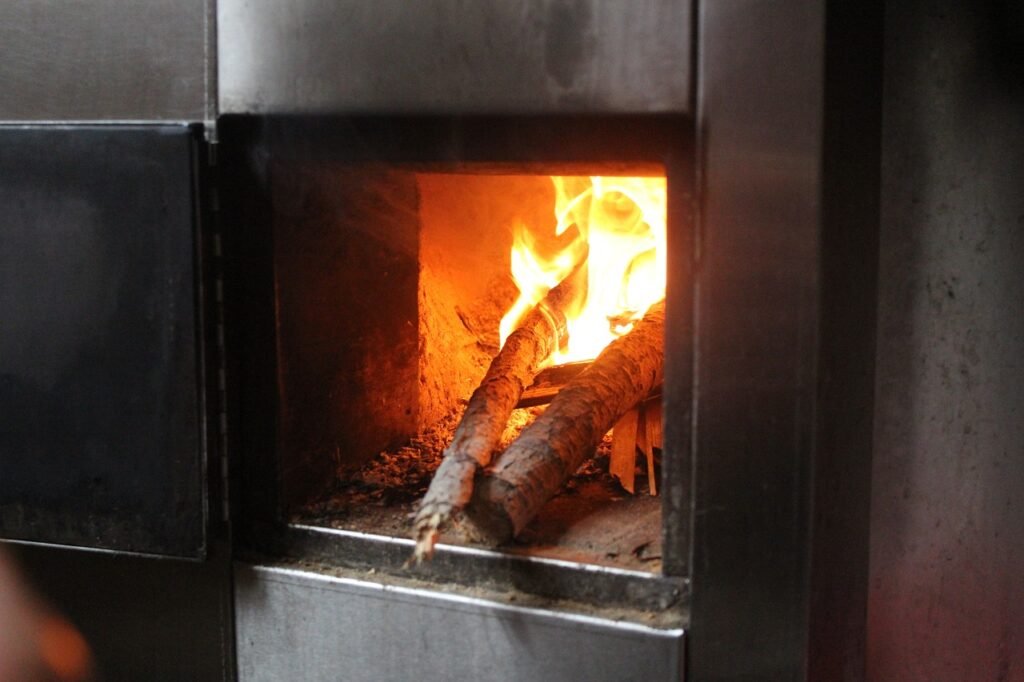
What is a Furnace?
A furnace is a central heating system used primarily in residential and commercial buildings to provide consistent, controlled heat. They function by blowing heated air through ducts that deliver the warm air to rooms throughout the building, thus ensuring a comfortable indoor environment during cold weather.
There are several types of furnaces, categorized mainly by their energy sources: gas, electric, wood, and oil.
Additionally, there is a method of heat distribution known as forced air, which is common across different energy types.
How Does a Gas Furnace Work?
Gas furnaces are among the most common types of heating found in North American homes, with approximately 47% of U.S. households primarily relying on natural gas as their main heating fuel.
The operation of a gas furnace begins seamlessly when the home’s thermostat detects a drop in the indoor temperature below a predetermined set point. It then sends a signal to activate the furnace.
Subsequently, the gas valve opens, allowing natural or propane gas to flow to the burners where it’s ignited by either an electronic igniter or a pilot flame. As the flames heat the metal heat exchanger, the air from the home’s return ducts is drawn over this heated surface, effectively warming it.
Following this, a blower fan takes action, propelling the warmed air through the furnace’s ductwork to distribute it evenly throughout the home. As the heated air circulates, the cooler air from various rooms is simultaneously drawn back to the furnace through the return ducts, ensuring a continuous flow that repeats the heating cycle.
Efficiency
The efficiency of gas-powered furnaces is measured by the Annual Fuel Utilization Efficiency (AFUE), and is often considered when selecting the best model.
Older, low-efficiency systems generally operate with an AFUE between 56% and 70%, meaning a significant portion of energy is lost in the heating process, causing higher heating costs.
Modern high-efficiency furnaces can achieve efficiencies ranging from 90% to 98.5% AFUE, converting nearly all the fuel to useful heat.
Ultra-high-efficiency models, reaching up to 98.5% AFUE, often utilize condensing technology to minimize energy waste and significantly reduce heating costs, helping homeowners save more.
Safety Features
Modern gas furnaces are equipped with advanced safety features to ensure they operate safely and effectively.
One crucial component is the flame sensor, which monitors the presence of a flame when the gas valve is open; if no flame is detected, it immediately shuts off the gas supply to prevent leaks.
Additionally, pressure switches play a vital role by detecting if the intake or exhaust systems are blocked, such as by a clogged flue, and will shut down the furnace to avoid dangerous gas buildups.
Limit switches are also integral, as they prevent the furnace from overheating by turning off the burners if the air in the exchanger becomes excessively hot.
These safety mechanisms work together to minimize the risk of accidents and enhance the furnace’s operational safety.
How Does an Electric Furnace Work?
Electric furnaces, while known for their simplicity and cleanliness compared to fuel-burning alternatives, incorporate several sophisticated components and safety features that enhance their functionality and safety.
According to the data from the 2015 Residential Energy Consumption Survey (RECS), 36% of households relied on electricity for home heating.
At the heart of an electric furnace are the heating elements made of high-resistance wires that heat up as electricity passes through them. These elements can reach high temperatures, efficiently transferring heat to the air that circulates over them.
The process begins with a thermostat within the home detecting a drop in temperature below the desired setting. This thermostat signals the furnace to activate. Once activated, a relay in the furnace’s control system energizes, allowing electricity to flow to the heating elements. The elements quickly heat up, and an internal blower fan then kicks in, drawing cold air from the home through return ducts. This air passes over the hot elements, where it absorbs the heat and is subsequently pushed back into the home through the ductwork.
Efficiency
The efficiency of electric furnaces is measured using the Annual Fuel Utilization Efficiency (AFUE) metric, similar to gas furnaces.
However, because electric furnaces do not burn fuel and produce no exhaust gases, they can achieve nearly 100% AFUE, meaning almost all the electricity consumed is directly converted into heat.
Despite this high AFUE rating, it’s important to consider that the source of the electricity can affect the overall environmental impact and cost-effectiveness of heating with electricity, as electricity generation itself can be less efficient and more polluting depending on the methods used (such as coal or natural gas power plants).
Safety Features
To ensure safety and prevent overheating, electric furnaces are equipped with several critical safety features.
High limit switches monitor the temperature inside the furnace; if the internal temperature exceeds safe levels, these switches will shut off the power to the heating elements to prevent potential fire hazards or damage to the furnace itself.
Additionally, the system includes sequencers that regulate the timing of the heating elements turning on and off, ensuring that not all elements heat up at the same time, which helps manage power consumption and reduces the risk of circuit overload.
Furthermore, the furnace includes circuit breakers or fuses to protect against electrical overload, safeguarding both the furnace and the home’s electrical system.
The incorporation of these features makes electric furnaces not only efficient but also remarkably safe heating systems suitable for a wide range of residential applications.
Related: Benefits of heat pumps
How Does an Oil-powered Furnace Work?
Oil furnaces, while similar in overall function to gas furnaces, utilize heating oil instead of natural gas or propane as their primary fuel source. Despite being less commonly used due to their higher operational costs and less efficient burning compared to gas, oil furnaces remain a viable heating solution in areas where natural gas is unavailable or impractical.
The operation of an oil furnace begins with the thermostat in the home detecting a need for heat, prompting the furnace to activate. At the heart of the furnace is the oil burner, where the oil is first atomized into a fine mist. This mist allows for more efficient combustion as it increases the surface area of the oil that is exposed to heat. The atomized oil is then ignited by an electric spark, creating a controlled flame within the combustion chamber.
As the oil burns, it generates a significant amount of heat, which is transferred to a metal heat exchanger. The home’s air is drawn in by a blower fan, passed over this hot heat exchanger, and heated.
This warmed air is then forced through the home’s ductwork, distributing heat throughout the building. The combustion gases produced by burning the oil are expelled from the home through a flue or chimney, ensuring that only clean, warm air is circulated inside the living spaces.
Efficiency
Modern oil furnaces have improved in efficiency, typically achieving Annual Fuel Utilization Efficiency (AFUE) ratings between 84% and 90%.
Despite the relatively high efficiency, the performance of oil furnaces can still lag behind gas furnaces, which may reach AFUE ratings in the upper 90s.
However, oil’s higher BTU content per gallon can offset some of these efficiency differences, providing more heat per gallon than natural gas.
Safety Features
To optimize the performance and safety of oil furnaces, they are equipped with several features. These include flame retention burners that improve efficiency by producing a hotter, more concentrated flame while using less fuel, and thermostats that closely monitor and control indoor temperatures.
Additionally, modern oil furnaces often come with high-efficiency filters that can capture impurities and particulates from the circulating air, improving indoor air quality.
How Does a Wood Furnace Work?
A wood furnace operates on a relatively straightforward principle: it burns wood to generate heat, which is then used to warm a building. The process begins with loading wood into the furnace’s combustion chamber, where it is ignited, either manually or automatically, depending on the model.
As the wood burns, it produces heat, which is captured by a heat exchanger-a system of metal plates or tubes that absorbs heat from the burning wood. The heat exchanger is crucial because it not only captures heat effectively but also helps to keep the combustion process separate from the air circulated throughout your home.
Once the heat is captured by the heat exchanger, a blower or fan pushes this warm air into the ductwork of the home, distributing it throughout the various rooms. This system allows for effective and even heating across different areas.
In more advanced or newer models, thermostatic controls automate the delivery of wood or the airflow, optimizing the burning rate and efficiency.
Exhaust gases produced by the combustion of wood are vented outside through a flue or chimney, which is essential for removing potentially harmful gases and maintaining air quality within the home.
Despite the manual effort required in loading wood and maintaining the furnace, wood furnaces can be a cost-effective heating option, especially in areas where wood is plentiful and inexpensive.
Efficiency
The efficiency of wood-burning appliances is primarily assessed through combustion efficiency and overall efficiency. Combustion efficiency measures how effectively the wood is converted into usable heat, whereas overall efficiency evaluates the proportion of this heat that actually warms the home, considering losses like smoke.
Modern wood stoves, particularly catalytic models, can achieve high combustion efficiencies, around 83%, but their overall efficiency tends to be lower due to heat losses.
What Is Forced-Air Heating?
Forced-air heating is a system that uses a blower fan to push heated air through a network of ducts, distributing warmth throughout a building. It can operate on various energy sources such as gas, electricity, or oil.
One of the major advantages of forced-air systems is their compatibility with central air conditioning systems. The same ductwork and blower used for heating can also distribute cool air from an air conditioning unit. This dual-functionality makes forced-air systems highly versatile and cost-effective for year-round climate control. In the summer, the system works in reverse, pulling warm air from the house, cooling it through the air conditioner’s evaporator coil, and then recirculating the cool air back through the house.
Additionally, forced-air systems offer the option of including advanced filtration within the ductwork. This filtration can significantly improve indoor air quality by removing dust, allergens, and other particulates from the air as it circulates.
Humidifiers and dehumidifiers can also be integrated into these systems, allowing for more precise control over indoor humidity levels, further enhancing comfort and air quality.
Single-Stage, Two-Stage, and Variable-Speed Furnaces Explained
Modern furnaces often come in single-stage, two-stage, or variable-speed models, each offering different benefits regarding efficiency, comfort, and operating costs.
Single-Stage Furnaces
These are the most basic type of furnaces. A single-stage furnace operates at full capacity whenever it is running. This means that once the furnace is turned on by the thermostat, it works at its maximum heat output until the desired temperature is reached and then shuts off. This on/off cycle is less efficient because the furnace always runs at full blast, leading to potential overheating and more noticeable temperature fluctuations in the home.
Two-Stage Furnaces
Two-stage furnaces can operate at two different levels: high for cold winter days and low for milder days. This capability allows for better energy efficiency because the furnace can often operate at the lower stage, using less fuel while maintaining a more consistent and comfortable indoor temperature. This also results in quieter operation and prolonged furnace life because it avoids the constant full-capacity cycling of single-stage furnaces.
Variable-Speed Furnaces
Variable-speed refers to the blower motor in the furnace, which controls the flow of air circulated through the home. Unlike single or two-stage furnaces, variable-speed furnaces can adjust their blower motor’s speed to precisely control the amount of heated air distributed through the home.
This precise control greatly enhances energy efficiency and provides the most even heating experience, with reduced temperature swings and better air filtration capabilities.
In gas and oil furnaces, this can be combined with modulating heat output, where the burner can adjust its flame incrementally to match the precise heat needs of the moment, making these furnaces the most efficient on the market.
Heat Distribution
Heat distribution in a home heating system is crucial for achieving comfort and energy efficiency.
In most modern heating systems, such as furnaces, this is achieved through a network of ducts that evenly distribute heated air across different rooms. The furnace heats the air, which a blower fan then pushes through this ductwork, ensuring that each room reaches the desired temperature.
The effectiveness of this distribution can be significantly affected by the design and condition of the ductwork. Properly sealed and insulated ducts prevent heat loss, ensuring that all the energy used to heat the air is effectively delivered to living spaces, not wasted in unheated areas like attics or crawl spaces.
Additionally, the layout of the ductwork should be strategically planned to evenly distribute air, avoiding hot or cold spots in the home.
Furnaces vs. Boilers
For homeowners exploring heating options, understanding the differences between furnaces and boilers is crucial.
As previously explained, furnaces heat air and distribute it through a duct system, providing quick temperature adjustments and a rapid spread of warmth throughout the home. This forced-air method is particularly effective in cold, dry climates where quick heating is beneficial.
In contrast, boilers heat water and distribute warmth either through radiators, radiant floor systems, or by heating air via a heat exchanger, similar to furnaces. The warmth from boilers is often considered more even and comfortable, as it doesn’t involve circulating new air, which can create drafts.
Choosing between a furnace and a boiler depends largely on the specific heating needs, climate, and preferences for home comfort.
Conclusion
Understanding the basic principles of how a furnace operates is essential for any homeowner looking to achieve optimal heating efficiency and comfort in their homes.
This includes answering the fundamental question: “What is a furnace?” and exploring its different types, such as gas and electric, or two-stage and variable-speed models, and understanding how they distribute heat.
This understanding not only helps in choosing the right heating solution that fits specific needs and local climates but also promotes effective maintenance practices that extend the lifespan of the system and maximize energy savings.
More About Furnaces
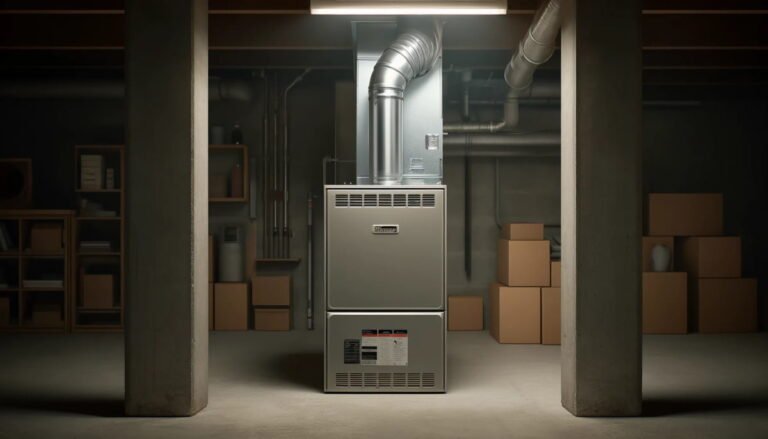
Top 10 Benefits of Home Furnaces: Enhancing Comfort and Value
As temperatures dip and the chill of winter sets in, the benefits of home furnaces become increasingly apparent. Home furnaces…

Exploring Furnace Types: Find The Best System For Your Home!
When it comes to heating your home, selecting the right furnace is crucial for ensuring comfort, efficiency, and cost-effectiveness. Furnaces…

